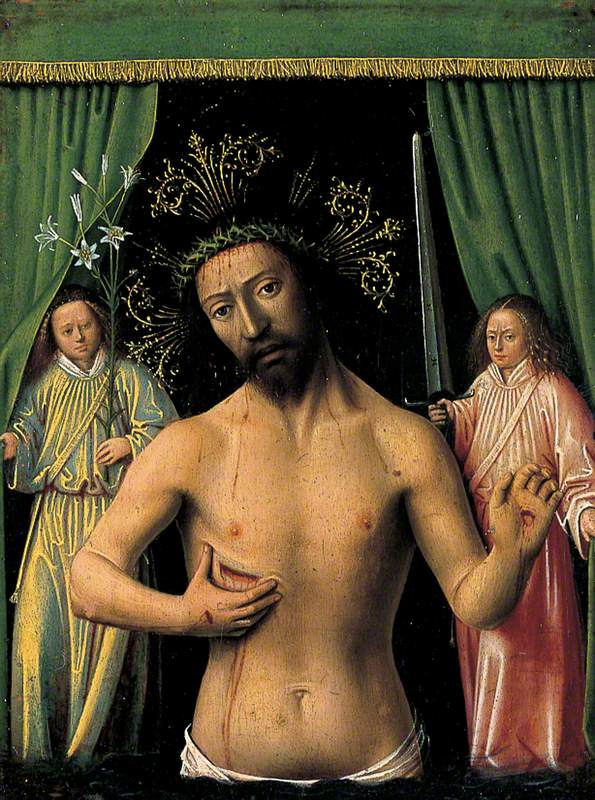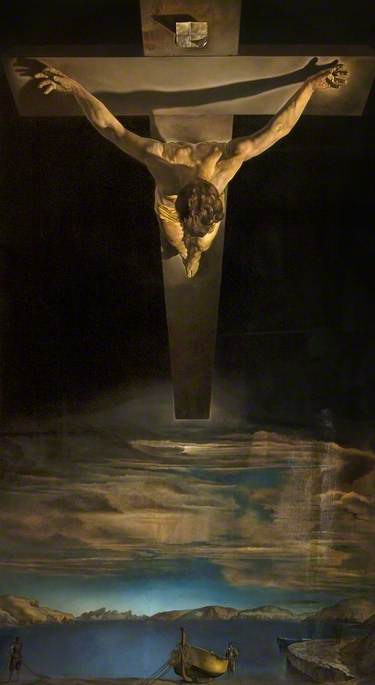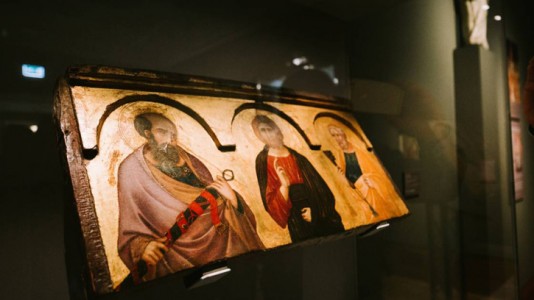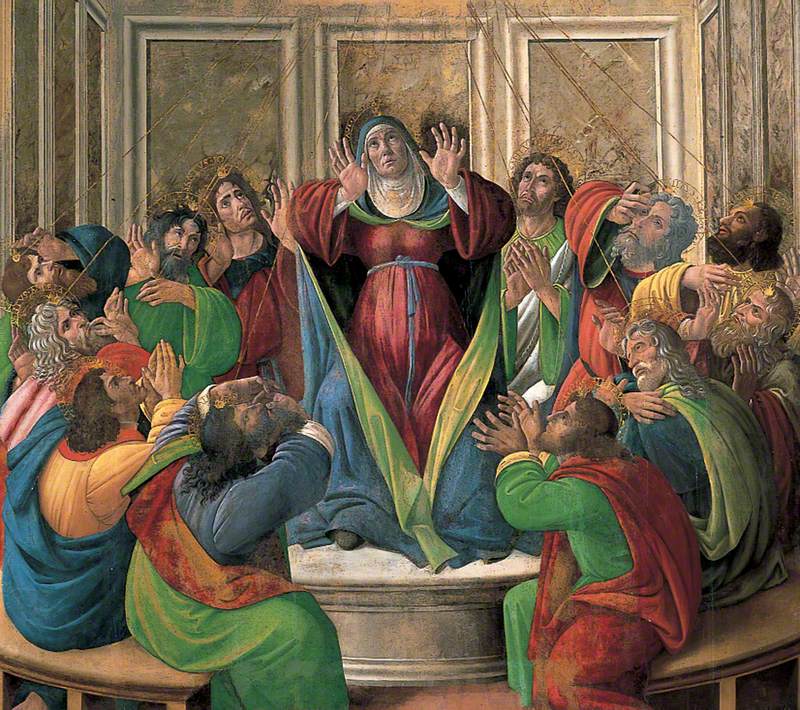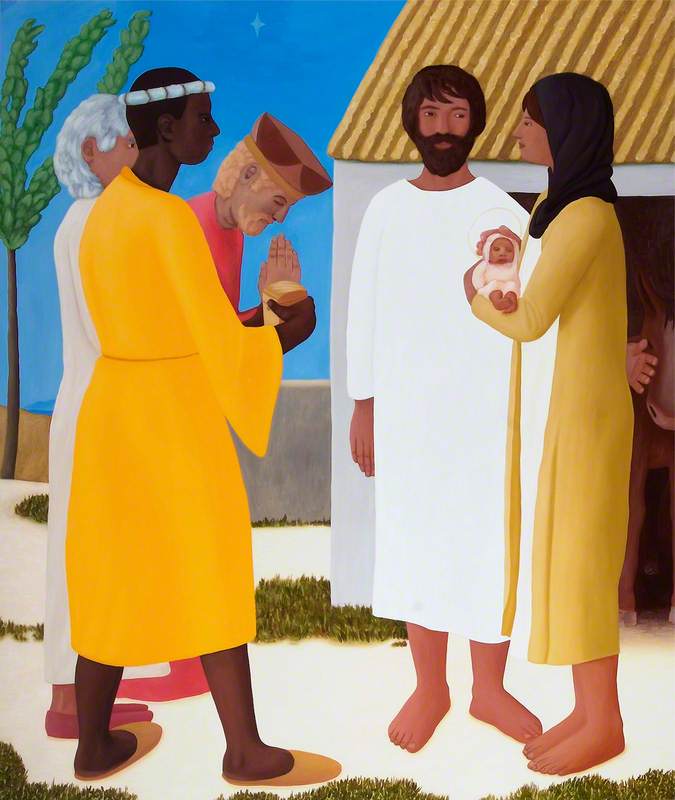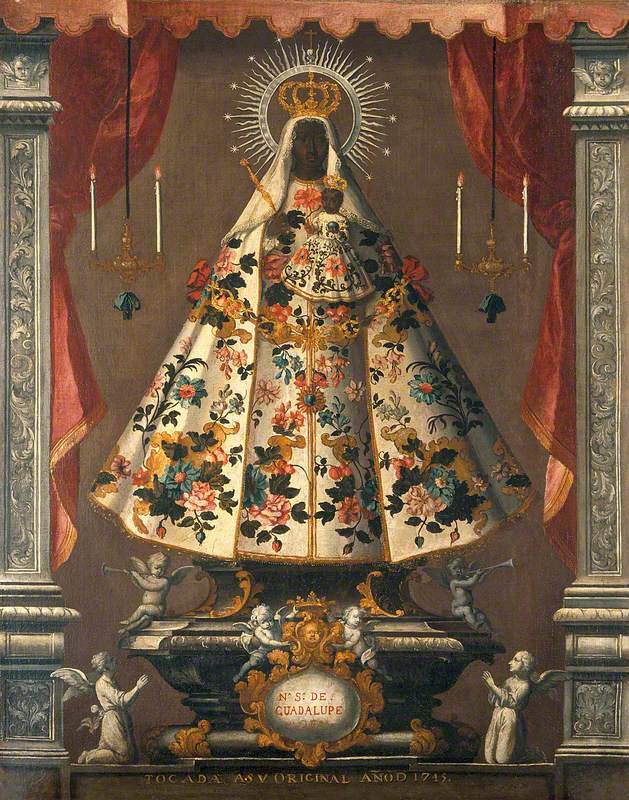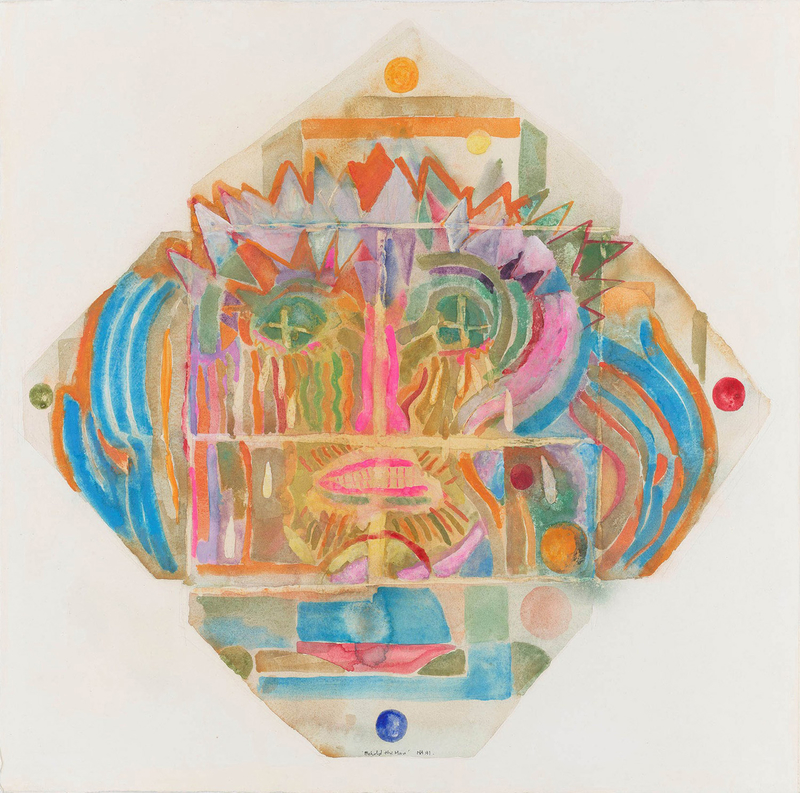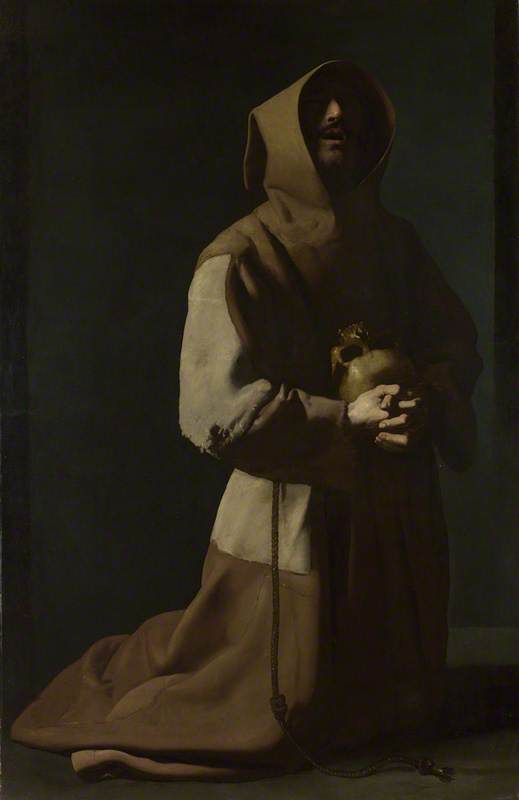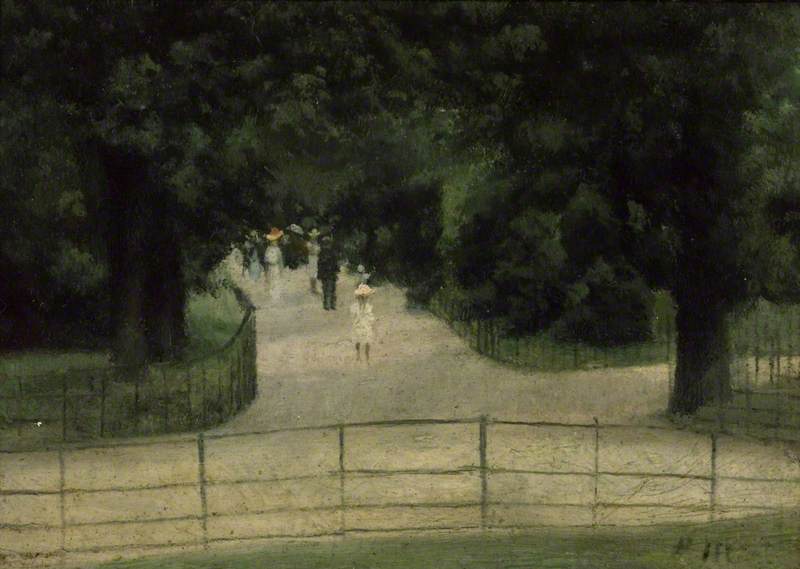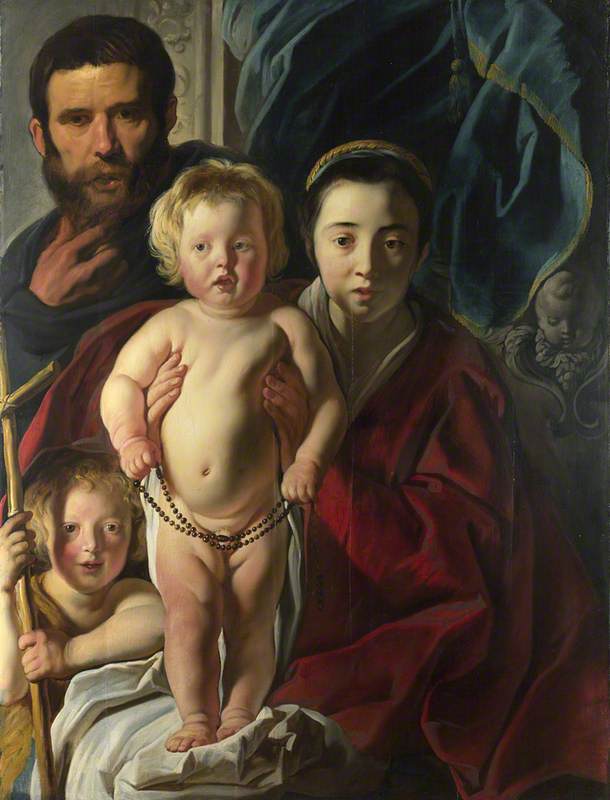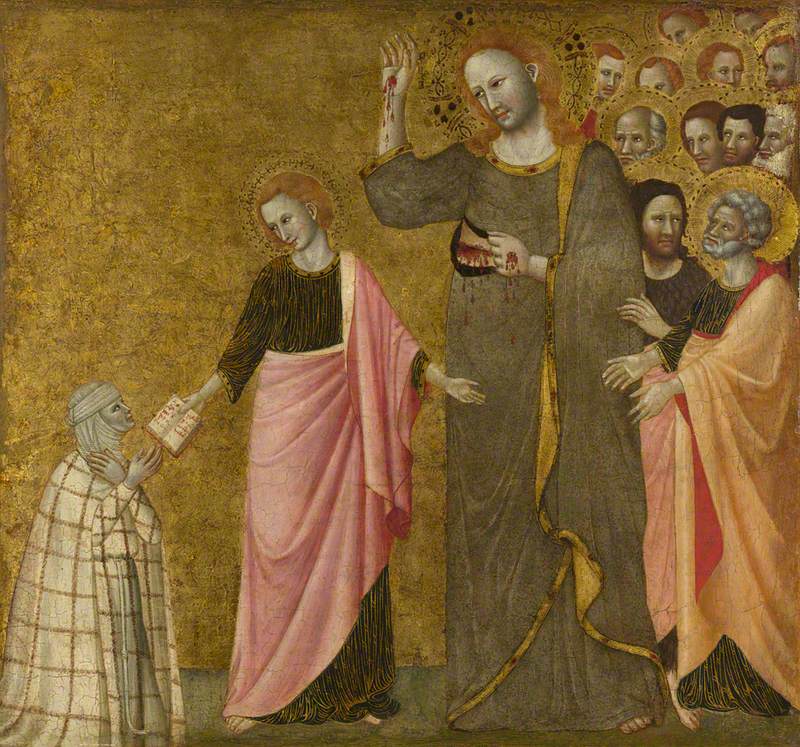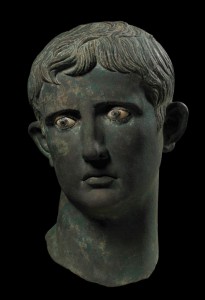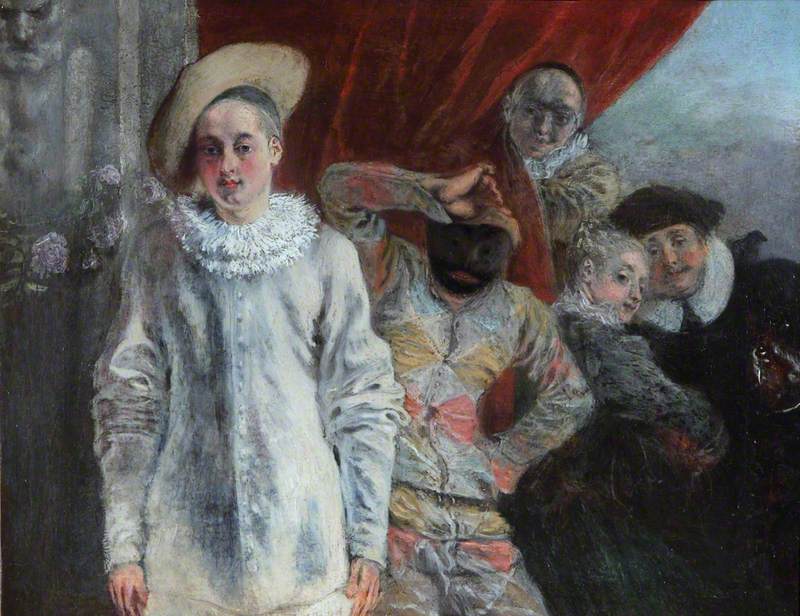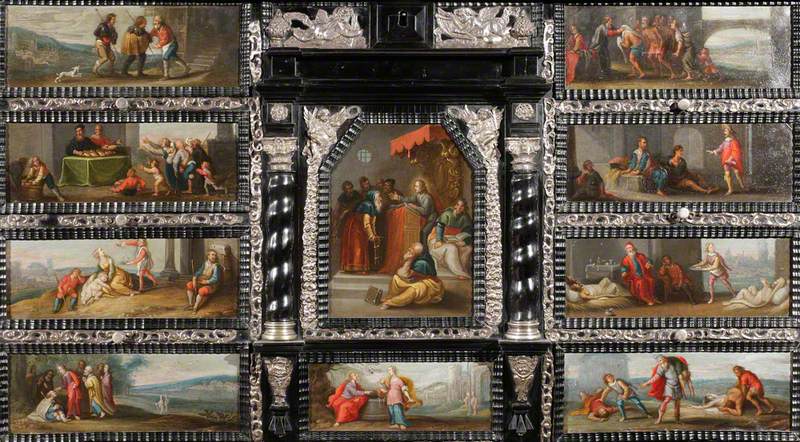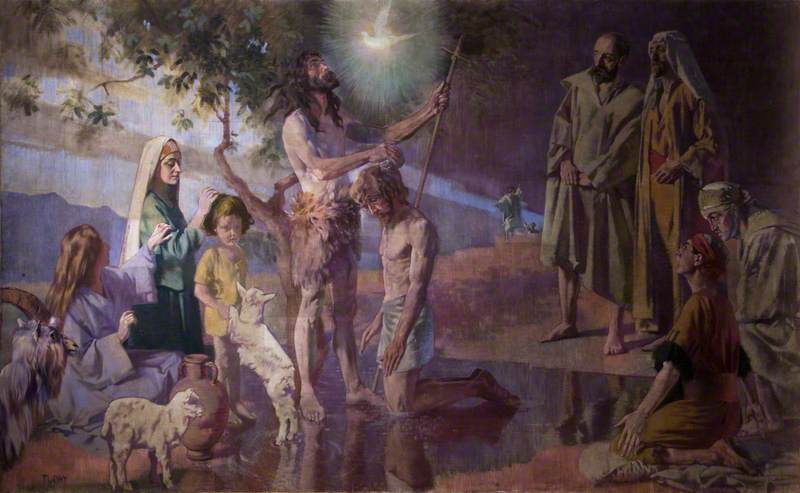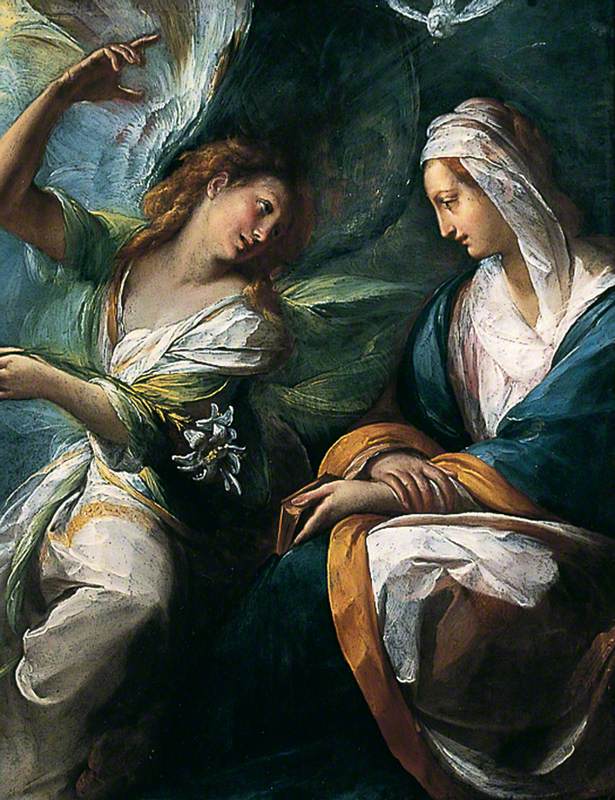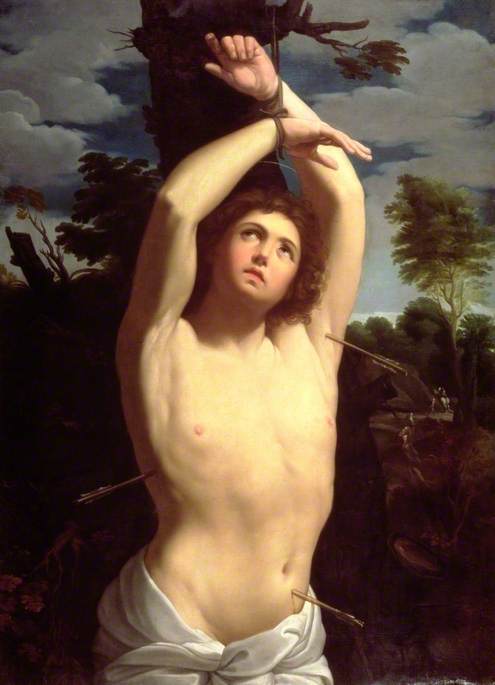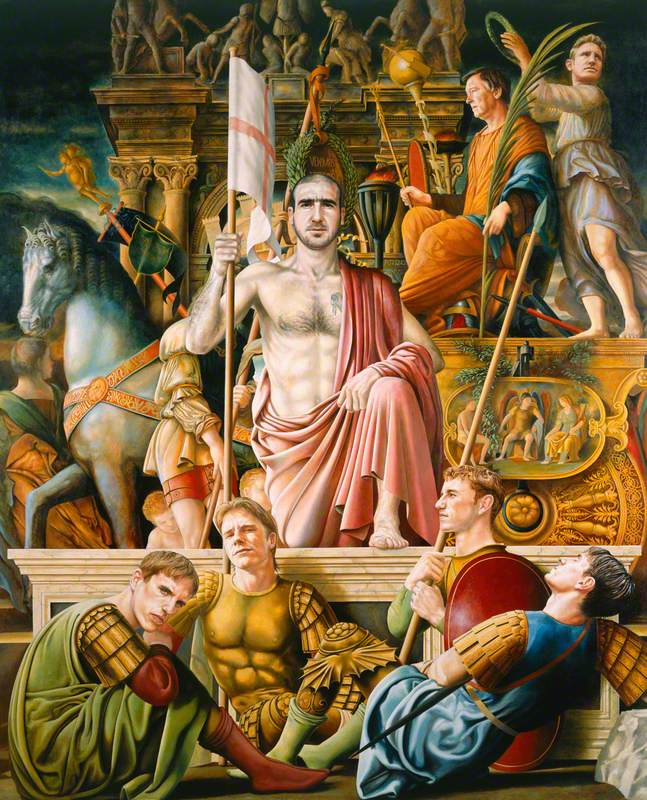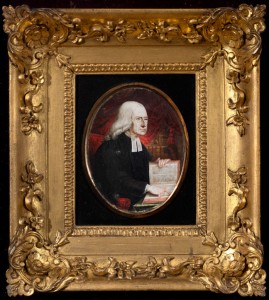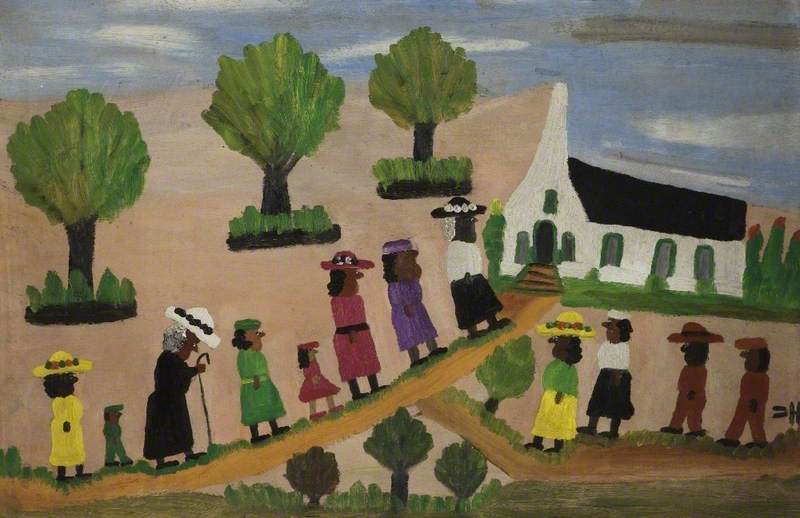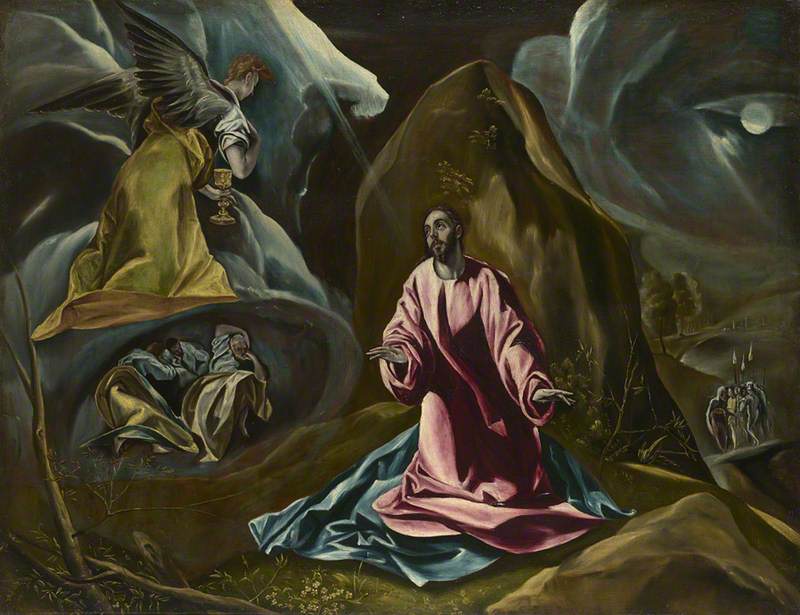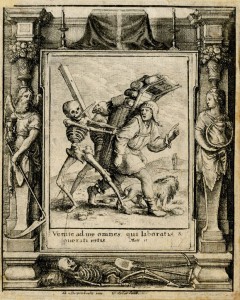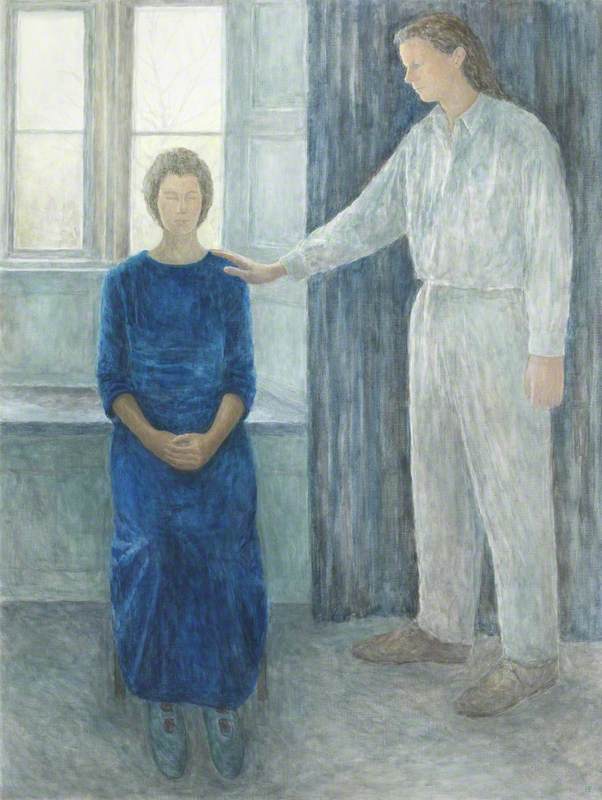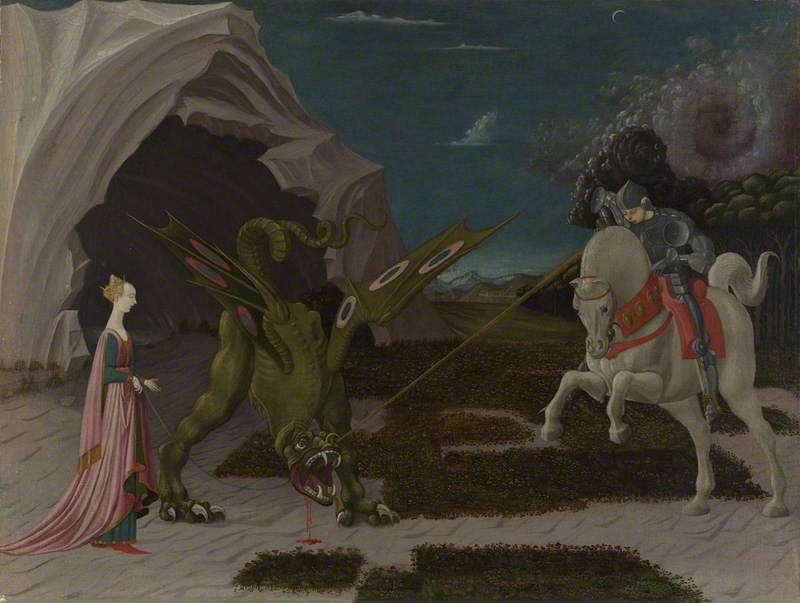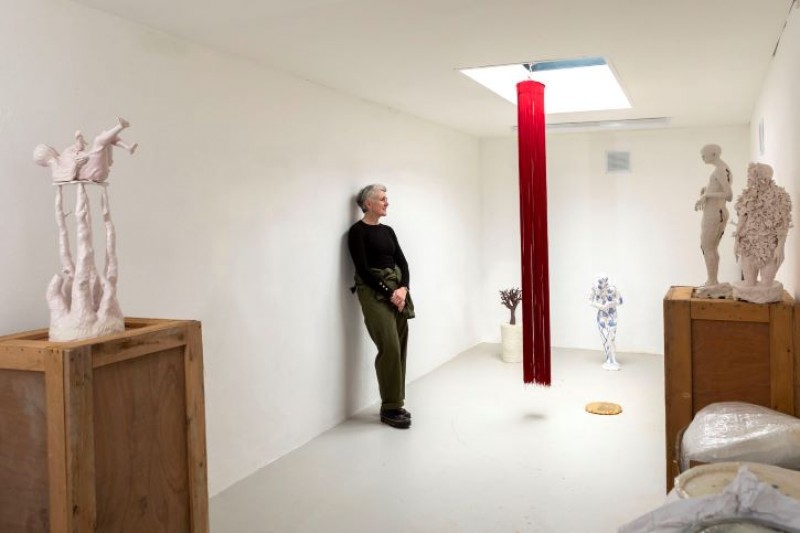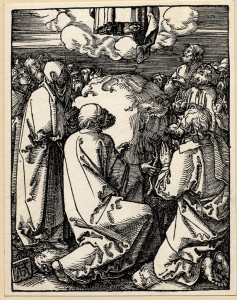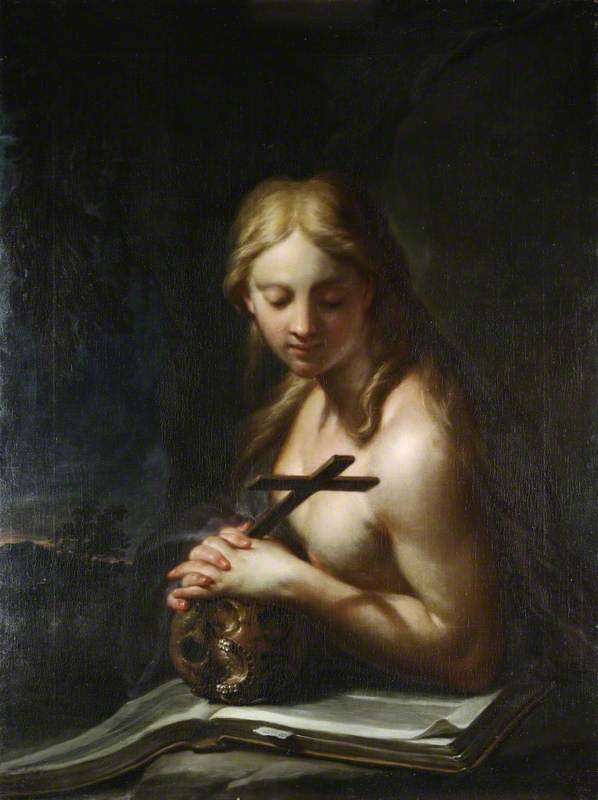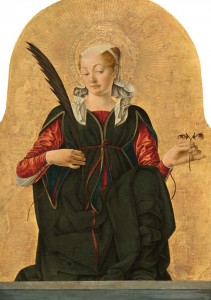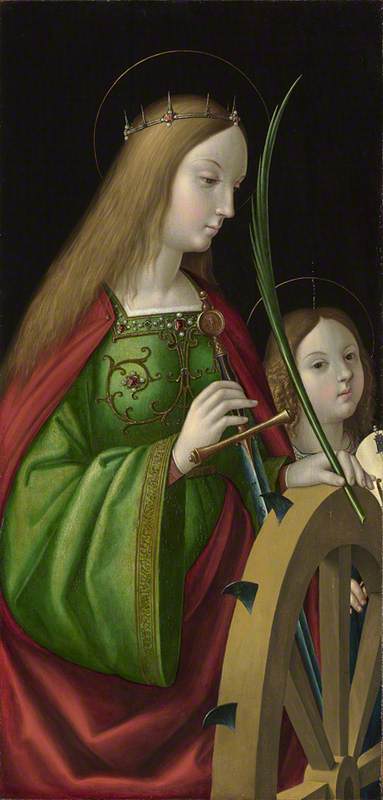We know very little about the artist Petrus Christus; he was probably born in Baerle, Brabant, around 1410 and is recorded as working in Bruges in 1444, when he was made a citizen of the town. He was a member of two confraternities in Bruges, and also a member of the Bruges Guild of Paintings up until his death in c.1475. It has been suggested that the unusual surname Christus derived from the nickname 'Christus-beeld', given because of his skill in painting faces of the Lord.
Dating from the mid-fifteenth century, and measuring just 11.2cm x 8.5cm, this tiny panel lures the viewer in to focus intimately on its detail. It was intended to be used as a personal aid to prayer, in keeping with the religious ‘Devotio Moderna’ teachings of the day, which encouraged close contemplation of the physicality of Christ.
Holding back the curtains, two angels present the risen Christ, baring his wounds. They carry lilies of mercy and the sword of judgement, encouraging us to meditate on how he suffered to redeem mankind from sin, while also reminding us that we will answer for our own sins on the Day of Judgement. It is rich in accurate detail. Each thorn in his crown is scrupulously painted; the blood drips jewel-like from the wound in his side. Light streams into the painting from Christ’s redeeming right-hand side, throwing into relief the shadows of his neck and torso.
It is as if we have looked through a window and glimpsed a timeless prompt to devotion; we are momentarily arrested, but at any second the angels might close the curtains and release us back into reality.
Camilla Stewart, Art UK Commercial Partnerships Manager
